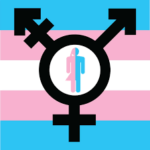Understanding gender identity can be a complex journey, but it’s essential to foster an inclusive society. One term that often comes up in discussions about gender is "trans." This article explores what "trans" means, the spectrum of gender identity, and how to support those who identify as trans. Whether you’re familiar with the topic or just starting to learn, this guide aims to provide clear insights into what it means to be trans today.
Understanding the Basics: What Does Trans Mean?
"Trans" is short for "transgender," which refers to individuals whose gender identity differs from the sex they were assigned at birth. For instance, someone assigned female at birth may identify as male, or a person assigned male at birth may identify as female. The term encompasses a wide range of identities, indicating that one’s gender is not strictly tied to physical characteristics or societal expectations. It’s a fundamental aspect of who a person is, transcending traditional definitions of gender.Top Surgery Non BinaryCan You Change Your Voice With Surgery
In addition to individuals who identify as men or women, "trans" can also include those who identify as genderqueer, genderfluid, or other non-binary identities. Understanding "trans" is about recognizing that gender is a spectrum, and everyone has the right to express their identity in a way that feels authentic to them. This acknowledgment is crucial in building respectful and inclusive communities.
The Spectrum of Gender Identity: Beyond Binary Norms
The concept of gender has evolved significantly over the years. Traditionally, many societies operated on a binary view of gender—male and female. However, we now recognize that gender is much more fluid and diverse. The spectrum of gender identity includes a variety of expressions, such as agender (identifying as having no gender), bigender (identifying as two genders), and more. This broader understanding helps to validate the experiences of many individuals who may not fit into the conventional categories of male or female.
By recognizing that gender is not a fixed attribute, society can better appreciate the rich tapestry of human identity. This shift encourages more people to explore and express their gender in ways that feel right for them, challenging outdated norms and expectations. It’s a journey of self-discovery and empowerment that emphasizes the importance of authenticity in how we see ourselves and each other.
Trans vs. Non-Binary: What’s the Difference?
While "trans" refers to individuals whose gender identity is different from their assigned sex at birth, "non-binary" is a term used for people who don’t exclusively identify as male or female. Non-binary individuals may feel like a mix of both genders, neither, or something entirely different. Essentially, all non-binary individuals can be considered trans if they don’t identify with the gender they were assigned at birth, but not all trans individuals are non-binary.
The distinction between trans and non-binary is significant because it highlights the diverse experiences within the transgender community. It’s essential to respect and recognize each person’s identity, as labels can be deeply personal. Engaging in conversations about these differences can foster understanding and respect for the various ways people express their gender.
The Importance of Pronouns in Trans Conversations
Pronouns are an essential aspect of identity for many trans individuals. Using the correct pronouns—such as he, she, they, or others—affirms a person’s gender identity and shows respect for who they are. When someone shares their pronouns with you, it’s crucial to use them consistently. This simple act can significantly impact a trans person’s mental well-being, fostering a sense of acceptance and validation.
If you’re unsure about someone’s pronouns, it’s perfectly okay to ask politely or to share your own first. Creating an environment where pronouns are discussed openly helps normalize the conversation around gender identity, making it easier for everyone to feel included. Remember, misgendering someone—referring to them with incorrect pronouns—can be hurtful, so correcting yourself and apologizing if you slip up is an important part of being an ally.
Common Misconceptions About Being Trans Explained
There are many misconceptions about being trans that can perpetuate stigma and misunderstanding. One common myth is that being transgender is simply a phase or a trend, which undermines the genuine experiences of trans individuals. In reality, many people have known their true gender identity for a long time and have often faced significant challenges in expressing it, including societal rejection and discrimination.
Another misconception is that all trans people undergo medical procedures to transition. While some may choose to pursue hormone therapy or surgery, many do not, and that doesn’t make their identity any less valid. Transitioning is a highly personal journey and can take many forms, including social transition, legal changes, and personal expression. Understanding that each person’s experience is unique is essential for fostering empathy and support.
Navigating the Trans Experience: Stories from Real People
To truly grasp the complexities of the trans experience, it’s helpful to listen to the stories of those who live it. Many trans individuals share their journeys through social media, blogs, and community forums, offering insights into their daily lives, struggles, and triumphs. These stories often highlight the resilience of trans people and the importance of self-acceptance, demonstrating how their identities are not merely defined by their gender but also by their dreams, passions, and kindness.
Hearing personal narratives can bridge the gap between understanding and empathy. By sharing their experiences, trans individuals can challenge stereotypes and showcase the diversity within the community. These stories inspire many to embrace their true selves and encourage allies to become more informed and supportive.
Support and Allyship: How to Stand by Trans Individuals
Being a good ally to trans individuals involves actively supporting their rights and well-being. This means advocating for equal treatment, challenging transphobia whenever you encounter it, and promoting inclusive policies, whether at work, school, or in your community. It’s vital to listen to trans voices and take cues from them about what support looks like, rather than assuming what they need based on preconceived notions.
Additionally, showing support in everyday interactions is crucial. This can include using the correct pronouns, speaking out against discriminatory comments, and creating safe spaces for trans individuals to express themselves. Simple gestures, like standing up for someone being misgendered or offering to educate others about trans issues, can make a world of difference.
Resources for Learning More About Trans Issues Today
If you’re eager to learn more about trans issues, plenty of resources are available. Websites like the Human Rights Campaign (HRC) and the Trevor Project offer extensive information on gender identity, mental health resources, and ways to get involved in advocacy efforts. Books by trans authors and documentaries featuring trans stories can provide deeper insights into the experiences and challenges faced by trans people.
Local LGBTQ+ organizations often host events, support groups, and educational workshops to foster understanding and acceptance. Engaging with these communities can help you become a more informed ally, allowing you to contribute positively to a culture of respect and equality for all gender identities.
Understanding what "trans" means is just the beginning of a broader conversation about gender identity and inclusion. By listening to trans voices, educating ourselves, and standing in solidarity with trans individuals, we can work towards a world where everyone, regardless of their gender identity, is respected and celebrated. Let’s continue to learn, grow, and support each other on this journey toward understanding and acceptance.


